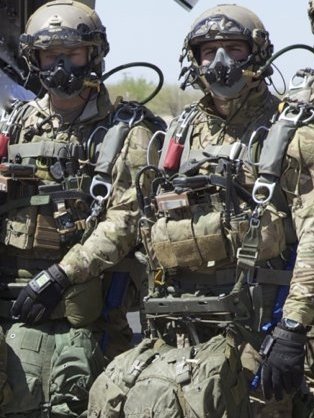Introducing Human Jet Suits Into The Special Forces

Article by Shantanu K. Bansal
Paratrooping is essentially a military endeavor but a step ahead many flying enthusiasts cum innovator have invented number of human jetpack machines which helps to realise the dream of the millenium of humans to fly solo in the air like a bird. This comes with inherent military utility.
The Special Forces are known for operations behind the enemy lines. These operations essentially require air support from safe distances to conduct penetrating operations or better known as infiltration operations followed by exfilteration, if lucky enough.
During the combat free fall course, the Para SF usually use the term HALO and HAHO falling techniques. The High Altitude High Opening (HAHO) of the Parachute is to get deep into the enemy territory but this tactic makes the soldier vulnerable to interception by enemy radar(s).
On the other hand, the High Altitude Low Opening (HALO) doesn’t allow the paratroopers to get deep into the enemy lines. The oxygen supply system is mandatory to be carried during such jumps. The weather, wind speed and terrain puts natural limitation on paratrooping.

All these standard abbreviations seems rigid when we talk about introducing human jet suits in the forces. Such suits are able to perform high-speed horizontal flights as good as an aircraft like a sea harrier or the F-35.
This shall give the much needed operational flexibility to the troopers combined with radar evading techniques the jet suit can prove to be a force multiplier for the special forces. This sounds like a Marvel’s Iron Man movie!
However, the technology is at very nascent stage and it is highly costly at this moment which doesn’t allow even the advance countries to introduce such technologies into the forces. As per the Gravity Industries, its jet suit has been available to buy since July 2018 for US $440,000.
There are also reports that such suits are noisy which can easily catch the attention of the enemy once the soldier enters the foreign territory. Another concern is the endurance of the suit, which can be enhanced by using standard transporter plane like any other para operation.
Another limitation is about how much load such a suit can carry in addition to the body weight, as a standard battle load consist of somewhere around 35Kgs. Yet not taking into account specialised equipements like wall penetrating radars, infrared devices, different types of explosives, rocket launchers etc. which are unusually required in such operations. Transporting them may require different concept of operations, compact transport drones may help here.
This goes without saying that the technology has immense commercial value in extreme sports/adventure rides segment but if DRDO and Indian private industry can make an endeavor to find better solution in this realm. They can stand apart as the best research institutions around the world, as good as DARPA but where is the incentive for the talent?


